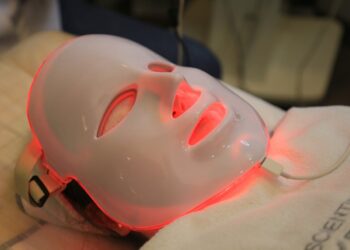Healthcare providers undergo the credentialing process before working in any medical institution. Credentialing services help hospitals hire qualified medical practitioners to improve patient safety and offer the best possible care. Here’s an in-depth look at hospital credentialing.
Hospital Credentialing
Hospital credentialing is a process in which a medical institution assesses the qualifications and competence of healthcare providers before hiring them. This process aims to make sure the healthcare providers meet the medical institution’s standards for patient care. Credentialing is a key stage in the hiring process as it can protect a medical institution from the repercussions of low-quality healthcare offered by incompetent professionals.
Hospital administrators can outsource the credentialing process to professionals or handle the process internally. If outsourced, a hospital doesn’t need to maintain an in-house credentialing team. This eliminates costs associated with employee benefits, salaries, and training. Credentialing services also allow medical institutions to focus on their core function — offering high-quality patient care.
Steps in the Credentialing Process
Credentialing involves verifying healthcare professionals’ credentials and assessing their ability to offer reliable patient care. Here are some steps involved in the process:
Application
In the application step, a hospital asks qualified healthcare providers to submit applications for vacant positions. Potential employees should provide details on their education, residency training, licensing, professional certifications, and medical experience. Some hospitals also require applicants to submit references from their past workplaces.
Verification
This step involves evaluating a healthcare provider’s credentials. Some of the elements that undergo verification include:
- Social security card
- Curriculum vitae
- School and residency diplomas
- Certification status
- State license
- DEA certificate
- Claims report
- Professional and peer references
- Work history
Evaluation
A hospital’s credentialing team assesses a healthcare provider’s ability to provide quality patient care. This step may involve a review of the professional’s past patient outcomes. It can also involve interviewing the provider’s past colleagues to determine their competency.
Approval
This step involves granting a healthcare provider the credentials they need to work at a hospital. Approval only occurs after the credentialing team determines that the healthcare provider can meet the hospital’s healthcare standards. This step can take weeks or months, depending on the complexity of a professional’s credentials and a hospital’s need for immediate help.
Benefits of Credentialing
Hospital credentialing benefits hospitals, patients, and healthcare providers. Here are some of the benefits of undergoing this process:
Patient Safety
The credentialing process can help hospitals provide high-quality patient care. Credentialing allows them to confirm healthcare providers’ qualifications before hiring them. Qualified and competent professionals will likely adhere to patient safety standards.
Regulation Compliance
Federal and state regulations require healthcare professionals to be licensed before providing patient care. Credentialing allows hospitals to confirm whether their potential employees are licensed. This may help reduce the risk of penalties and fines.
Risk Management
Credentialing may mitigate a hospital’s risk, as competent medical professionals are less likely to make medical errors. Working with qualified healthcare providers may help reduce the risk of malpractice claims.
Credentialing Versus Privileging
Credentialing and privileging are key processes in the healthcare industry that make sure medical professionals are qualified and competent to provide high-quality care to patients. While the two terms are often used interchangeably, they refer to two different aspects of the same process. Healthcare professionals should go through the credentialing process to receive hospital privileges.
Privileging focuses on a healthcare provider’s scope of practice. Hospitals offer different privileges depending on one’s competence and qualifications. Here are the main types of privileges:
Admitting Privileges
Admitting privileges, also known as active privileges, allow physicians to admit patients into a hospital. These privileges are typically given to physicians who are part of a hospital’s medical staff. With these privileges, physicians can admit patients without going through the ER first.
Courtesy Privileges
Courtesy privileges allow physicians to admit patients into specific hospitals. They also allow physicians to visit their patients if admitted but can’t treat them on the hospital premises. They’re issued to professionals not part of a hospital’s medical staff.
Surgical Privileges
Surgical privileges are only issued to healthcare providers with surgical qualifications. Surgeons with these privileges can perform surgeries on a hospital’s patients. They can also perform outpatient surgeries using the hospital’s operating room.
Credentialing Services for Quality Patient Care
Credentialing services can help hospitals maintain high-quality patient care standards. They allow medical institutions to confirm physicians’ qualifications before hiring them, minimizing the risk of poor patient outcomes.
Healthcare providers should understand the credentialing process, submit all necessary documentation, and undergo evaluations to secure hospital privileges. Use a reputable credentialing service for your hospital staff hiring today.







